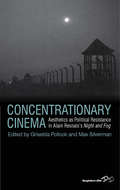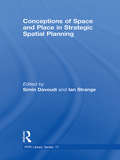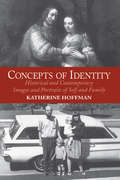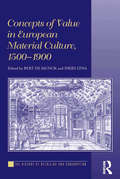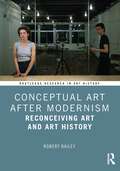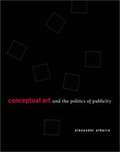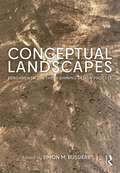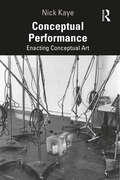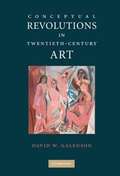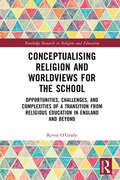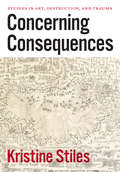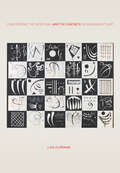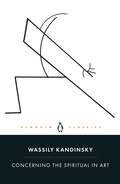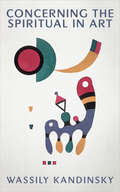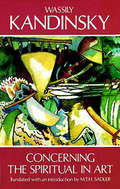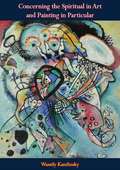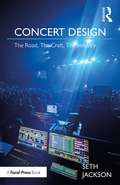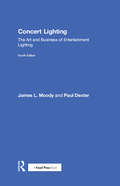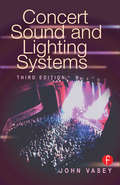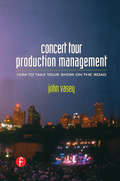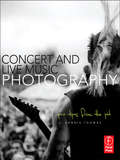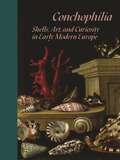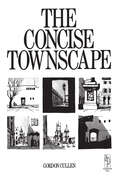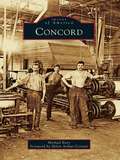- Table View
- List View
Concentrationary Cinema
by Griselda Pollock Max SilvermanSince its completion in 1955, Alain Resnais's Night and Fog (Nuit et Brouillard) has been considered one of the most important films to confront the catastrophe and atrocities of the Nazi era. But was it a film about the Holocaust that failed to recognize the racist genocide? Or was the film not about the Holocaust as we know it today but a political and aesthetic response to what David Rousset, the French political prisoner from Buchenwald, identified on his return in 1945 as the 'concentrationary universe' which, now actualized, might release its totalitarian plague any time and anywhere? What kind of memory does the film create to warn us of the continued presence of this concentrationary universe? This international collection re-examines Resnais's benchmark film in terms of both its political and historical context of representation of the camps and of other instances of the concentrationary in contemporary cinema. Through a range of critical readings, Concentrationary Cinema explores the cinematic aesthetics of political resistance not to the Holocaust as such but to the political novelty of absolute power represented by the concentrationary system and its assault on the human condition.
Conceptions of Space and Place in Strategic Spatial Planning (RTPI Library Series)
by Ian Strange Simin DavoudiBringing together authors from academia and practice, this book examines spatial planning at different places throughout the British Isles. Six illustrative case studies of practice examine which conceptions of space and place have been articulated, presented and visualized through the production of spatial strategies. Ranging from a large conurbation (London) to regional (Yorkshire and Humber) and national levels, the case studies give a rounded and grounded view of the physical results and the theory behind them. While there is widespread support for re-orienting planning towards space and place, there has been little common understanding about what constitutes ‘spatial planning’, and what conceptions of space and place underpin it. This book addresses these questions and stimulates debate and critical thinking about space and place among academic and professional planners.
Concepts of Identity: Historical and Contemporary Images and Portraits of Self and Family
by Katherine Hoffman<p>Concepts of identity are complex and changing, and in this book Katherine Hoffman examines images of individuals and families from ancient Egypt to the present—more than two thirds of the book covers the twentieth century. Through a comprehensive study of paintings, sculpture, photography, film, television, and other media, Hoffman provides eye-opening insights on the identity of family and self through time and explores what these images say about the attitudes and values of a particular culture. <p>Concepts of identity and self as individuals and families are complex and changing, but images from the artist, the photographer, the filmmaker, and TV producer can help us discover where we came from, who we are and why, and where we are in the maze of postmodern life. Katherine Hoffman explores portraits and images from ancient Egypt to the present—more than two-thirds of the book covers the twentieth century, including images from art, photography, film, TV, and other media. The 75 illustrations are integrated with the text.</p>
Concepts of Value in European Material Culture, 1500-1900 (The History of Retailing and Consumption)
by Bert De Munck Dries LynaIn contemporary society it would seem self-evident that people allow the market to determine the values of products and services. For everything from a loaf of bread to a work of art to a simple haircut, value is expressed in monetary terms and seen as determined primarily by the 'objective' interplay between supply and demand. Yet this 'price-mechanism' is itself embedded in conventions and frames of reference which differed according to time, place and product type. Moreover, the dominance of the conventions of utility maximising and calculative homo economicus is a relatively new phenomenon, and one which directly correlates to the steady advent of capitalism in early modern Europe. This volume brings together scholars with expertise in a variety of related fields, including economic history, the history of consumption and material culture, art history, and the history of collecting, to explore changing concepts of value from the early modern period to the nineteenth century and present a new view on the advent of modern economic practices. Jointly, they fundamentally challenge traditional historical narratives about the rise of our contemporary market economy and consumer society.
Conceptual Art After Modernism: Reconceiving Art and Art History (Routledge Research in Art History)
by Robert BaileyThis study provides a new interpretation of art after modernism by foregrounding the importance of conceptual thinking as a pervasive force for change in art and art history since 1950.Robert Bailey shows how distinctions between art and art history gave way as conceptual thinking provided artists and art historians with a common means to reassess what art could be and do in the world. Bailey assesses the results of artful and scholarly inquiries combining creative activity with intellectual rigor to proffer new approaches to a variety of social and environmental concerns, ranging from questions about human identity—including race, class, gender, and sexuality—to activist efforts to redress everything from abortion access to migrants’ rights, to climate change. This book provides both a historical overview of these developments and close analyses of key works and texts, spanning 1950 to the present and encompassing broad geographic scope with special attention paid to Indigenous art.The book will be of interest to scholars working in art history and contemporary art.
Conceptual Art and the Politics of Publicity
by Alexander AlberroConceptual art was one of the most influential art movements of the second half of the twentieth century. In this book Alexander Alberro traces its origins to the mid-1960s, when its principles were first articulated by the artists Dan Graham, Joseph Kosuth, Sol LeWitt, Lawrence Weiner, and others. One of Alberro's central arguments is that the conceptual art movement was founded not just by the artists but also by the dealer Seth Siegelaub. Siegelaub promoted the artists, curated groundbreaking shows, organized symposia and publications, and in many ways set the stage for another kind of entrepreneur: the freelance curator. Alberro examines both Siegelaub's role in launching the careers of artists who were making "something from nothing" and his tactful business practices, particularly in marketing and advertising. Alberro draws on close readings of artworks produced by key conceptual artists in the mid- to late 1960s. He places the movement in the social context of the rebellion against existing cultural institutions, as well as the increased commercialization and globalization of the art world. The book ends with a discussion of one of Siegelaub's most material and least ephemeral contributions, the Artist's Reserved Rights Transfer and Sale Agreement, which he wrote between 1969 and 1971. Designed to limit the inordinate control of collectors, galleries, and museums by increasing the artist's rights, the Agreement unwittingly codified the overlap between capitalism and the arts.
Conceptual Landscapes: Fundamentals in the Beginning Design Process
by Simon M. BussiereConceptual Landscapes explores the dilemma faced in the early moments of design thinking through a gradient of work in landscape and environmental design media by both emerging and well-established designers and educators of landscape architecture. It questions where and, more importantly, how the process of design starts. The book deconstructs the steps of conceptualizing design in order to reignite pedagogical discussions about timing and design fundamentals, and to reveal how the spark of an idea happens – from a range of unique perspectives. Through a careful arrangement of visual essays that integrate analog, digital, and mixed-media works and processes, the book highlights differences between diverse techniques and triggers debate between design, representation, technology, and creative culture in the field. Taken together, the book’s visual investigation of the conceptual design process serves as a learning tool for aspiring designers and seasoned professionals alike. By situating student work alongside that of experienced teachers and landscape architects, the book also demystifies outdated notions of individual genius and sheds new light on the nearly universally messy process of discovery, bridged across years and diverse creative vocabularies in the conceptual design process. Lavishly illustrated with over 210 full color images, this book is a must-read for students and instructors in landscape architecture.
Conceptual Performance: Enacting Conceptual Art
by Nick KayeConceptual Performance explores how the radical visual art that challenged material aesthetics in the 1960s and 1970s tested and extended the limits, character and concept of performance. Conceptual Performance sets out the history, theoretical basis, and character of this genre of work through a wide range of case studies. The volume considers how and why principal modes and agendas in Conceptual art in the 1960s and 1970s necessitated new engagements with performance, as well as expanded notions of theatricality. In doing so, this book reviews and challenges prevailing histories of Conceptual art through critical frameworks of performativity and performance. It also considers how Conceptual art adopted and redefined terms and tropes of theatre and performance: including score, document, embodiment, documentation, relic, remains, and the narrative recuperation of ephemeral work. While showing how performance has been integral to Conceptual art’s critiques of prevailing assumptions about art’s form, purpose, and meaning, this volume also considers the reach and influence of Conceptual performance into recent thinking and practice. This book will be of interest to scholars and students of theatre, performance, contemporary art, and art history.
Conceptual Revolutions in Twentieth-Century Art
by David W. GalensonFrom Picasso's Cubism and Duchamp's readymades to Warhol's silkscreens and Smithson's earthworks, the art of the twentieth century broke completely with earlier artistic traditions. A basic change in the market for advanced art produced a heightened demand for innovation, and young conceptual innovators - from Picasso and Duchamp to Rauschenberg and Warhol to Cindy Sherman and Damien Hirst - responded not only by creating dozens of new forms of art, but also by behaving in ways that would have been incomprehensible to their predecessors. Conceptual Revolutions in Twentieth-Century Art presents the first systematic analysis of the reasons for this discontinuity. David W. Galenson, whose earlier research has changed our understanding of creativity, combines social scientific methods with qualitative analysis to produce a fundamentally new interpretation of modern art that will give readers a far deeper appreciation of the art of the past century, and of today, than is available elsewhere.
Conceptualising Religion and Worldviews for the School: Opportunities, Challenges, and Complexities of a Transition from Religious Education in England and Beyond (Routledge Research in Religion and Education)
by Kevin O'GradyThis timely volume addresses current debates surrounding the transition from the teaching of religious education (RE) to the more holistic subject of Religion and Worldviews (R&W) in England, and posits criteria for best practice among educators in varied settings and in a broader international context. By examining empirical sources, governmental reports, and in particular the 2018 final report from the Commission on Religious Education (CORE), the volume suggests key principles needed to guide the transition and ensure that R&W is effectively integrated into curricula, pedagogy, and teaching resources to meet the needs of all student groups. By effectively conceptualising R&W, the volume gives particular attention to the intersections of the subject with democratic citizenship education, intercultural competence, and religious literacy. This text will benefit researchers, academics, and educators with an interest in religious education and teacher education as well as the philosophy and sociology of education more broadly. Those interested in education policy and politics, as well as citizenship and schooling in the UK, will also benefit from this volume.
Concerning Consequences: Studies in Art, Destruction, and Trauma
by Kristine StilesKristine Stiles has played a vital role in establishing trauma studies within the humanities. A formidable force in the art world, Stiles examines the significance of traumatic experiences both in the individual lives and works of artists and in contemporary international cultures since World War II. In Concerning Consequences, she considers some of the most notorious art of the second half of the twentieth century by artists who use their bodies to address destruction and violence. The essays in this book focus primarily on performance art and photography. From war and environmental pollution to racism and sexual assault, Stiles analyzes the consequences of trauma as seen in the works of artists like Marina Abramovic, William Pope. L, and Chris Burden. Assembling rich intellectual explorations on everything from Paleolithic paintings to the Bible's patriarchal legacies to documentary images of nuclear explosions, Concerning Consequences explores how art can provide a distinctive means of understanding trauma and promote individual and collective healing.
Concerning the Spiritual and the Concrete in Kandinsky's Art
by Lisa FlormanThis book examines the art and writings of Wassily Kandinsky, who is widely regarded as one of the first artists to produce non-representational paintings. Crucial to an understanding of Kandinsky's intentions is On the Spiritual in Art, the celebrated essay he published in 1911. Where most scholars have taken its repeated references to "spirit" as signaling quasi-religious or mystical concerns, Florman argues instead that Kandinsky's primary frame of reference was G. W. F. Hegel's Aesthetics, in which art had similarly been presented as a vehicle for the developing self-consciousness of spirit (or Geist, in German). In addition to close readings of Kandinsky's writings, the book also includes a discussion of a 1936 essay on the artist's paintings written by his own nephew, philosopher Alexandre Kojève, the foremost Hegel scholar in France at that time. It also provides detailed analyses of individual paintings by Kandinsky, demonstrating how the development of his oeuvre challenges Hegel's views on modern art, yet operates in much the same manner as does Hegel's philosophical system. Through the work of a single, crucial artist, Florman presents a radical new account of why painting turned to abstraction in the early years of the twentieth century.
Concerning the Spiritual and the Concrete in Kandinsky's Art
by Lisa FlormanThis book examines the art and writings of Wassily Kandinsky, who is widely regarded as one of the first artists to produce non-representational paintings. Crucial to an understanding of Kandinsky's intentions is On the Spiritual in Art, the celebrated essay he published in 1911. Where most scholars have taken its repeated references to "spirit" as signaling quasi-religious or mystical concerns, Florman argues instead that Kandinsky's primary frame of reference was G. W. F. Hegel's Aesthetics, in which art had similarly been presented as a vehicle for the developing self-consciousness of spirit (or Geist, in German). In addition to close readings of Kandinsky's writings, the book also includes a discussion of a 1936 essay on the artist's paintings written by his own nephew, philosopher Alexandre Kojève, the foremost Hegel scholar in France at that time. It also provides detailed analyses of individual paintings by Kandinsky, demonstrating how the development of his oeuvre challenges Hegel's views on modern art, yet operates in much the same manner as does Hegel's philosophical system. Through the work of a single, crucial artist, Florman presents a radical new account of why painting turned to abstraction in the early years of the twentieth century.
Concerning the Spiritual in Art
by Wassily KandinskyA seminal text in the history of modern art, from one of the most famous artists of the twentieth century‘Art is the language that speaks to the soul’Why do we make art? In Concerning the Spiritual in Art Wassily Kandinsky, one of the earliest and most famous abstract painters, argued against ‘art for art’s sake’. Exploring form and colour, spirituality and tradition, Kandinsky instead predicted a future for painting in its potential to redirect the attention of viewers away from the shallow materialism of the modern world toward the more profound intellectual and emotional concerns of their interior lives. His revolutionary work became a landmark in modern art history, helping to usher in the age of non-representational painting. This new translation also includes Kandinsky’s later essay, ‘The Question of Form’, in which he interrogates and sharpens many of his earlier ideas.A new translation by Ruth Ahmedzai KempWith an introduction by Lisa Florman
Concerning the Spiritual in Art
by Wassily KandinskyPioneering and Exploring the Spiritual Revolution in Modern Art In the early 20th century, the pioneering and celebrated painter Wassily Kandinsky (1866-1944) wrote this groundbreaking work advocating a powerful role for spirituality in driving the creation of modern art. Voicing his own strong opinions as well as the philosophical passions of his peers, Kandinsky urged traditional artists to break free from the limiting restraints of the material world in their work. By faithfully using their own uninhibited thoughts and inner emotions for inspiration-essentially channeling the human spirit instead of representing material concerns-he believed that artists could transcend the norms of the time to reach new levels of abstract expression and aesthetic beauty. Likewise, he also challenged the viewing public to admire art with a fierce spiritual hunger. With insightful explorations of form and color theory, creative inspiration, psychology, religion, music, ethics, and even politics, Kandinsky makes a strong case for his artistic revolution. The movement he inspired with his theories played a pivotal role in the development of modern art, particularly in the growth and evolution of abstract painting. Featuring an enlightening introduction by the book's translator, Michael T. H. Sadler, providing generational and cultural context for Kandinsky and his work, Concerning the Spiritual in Art gives testimony to the mind and creative expression of Kandinsky and other artists of his generation. This seminal and thought-provoking book exploring the heart of the artistic endeavor belongs in the library of every serious artist and student of modern art.
Concerning the Spiritual in Art (Dover Fine Art, History of Art)
by Wassily KandinskyA pioneering work in the movement to free art from its traditional bonds to material reality, this book is one of the most important documents in the history of modern art. Written by the famous nonobjective painter Wassily Kandinsky (1866–1944), it explains Kandinsky's own theory of painting and crystallizes the ideas that were influencing many other modern artists of the period. Along with his own groundbreaking paintings, this book had a tremendous impact on the development of modern art.Kandinsky's ideas are presented in two parts. The first part, called "About General Aesthetic," issues a call for a spiritual revolution in painting that will let artists express their own inner lives in abstract, non-material terms. Just as musicians do not depend upon the material world for their music, so artists should not have to depend upon the material world for their art. In the second part, "About Painting," Kandinsky discusses the psychology of colors, the language of form and color, and the responsibilities of the artist. An Introduction by the translator, Michael T. H. Sadler, offers additional explanation of Kandinsky's art and theories, while a new Preface by Richard Stratton discusses Kandinsky's career as a whole and the impact of the book. Making the book even more valuable are nine woodcuts by Kandinsky himself that appear at the chapter headings.This English translation of Über das Geistige in der Kunst was a significant contribution to the understanding of nonobjectivism in art. It continues to be a stimulating and necessary reading experience for every artist, art student, and art patron concerned with the direction of 20th-century painting.
Concerning the Spiritual in Art and Painting in Particular
by Wassily KandinskyA pioneering work in the movement to free art from its traditional bonds to material reality, this book is one of the most important documents in the history of modern art. Written by the famous non-objective painter Wassily Kandinsky (1866-1944), it explains Kandinsky’s own theory of painting and crystallizes the ideas that were influencing many other modern artists of the period. Along with his own ground-breaking paintings, this book had a tremendous impact on the development of modern art.Kandinsky’s ideas are presented in two parts. The first part, called “About General Aesthetic,” issues a call for a spiritual revolution in painting that will let artists express their own inner lives in abstract, non-material terms. Just as musicians do not depend upon the material world for their music, so artists should not have to depend upon the material world for their art. In the second part, “About Painting,” Kandinsky discusses the psychology of colors, the language of form and color, and the responsibilities of the artist. An Introduction by the translator, Michael T. H. Sadler, offers additional explanation of Kandinsky’s art and theories. Making the book even more valuable are nine woodcuts by Kandinsky himself that appear at the chapter headings.This English translation of Über das Geistige in der Kunst was a significant contribution to the understanding of non-objectivism in art. It continues to be a stimulating and necessary reading experience for every artist, art student, and art patron concerned with the direction of twentieth-century painting.-Print ed.
Concert Design: The Road, The Craft, The Industry
by Seth JacksonConcert Design: The Road, The Craft, The Industry offers an exceptional journey though the world of concert design, exploring not only its unique design attributes but also the industry that has grown around it and how to make a career of ‘the road’. Concert designer Seth Jackson analyzes how the industry has changed over the last three decades – from its early days of ‘no rules’ and ‘cowboys’ to a thriving and growing industry with countless career opportunities. Drawing on 25 years of experience and clients ranging from Carrie Underwood to Don Henley, he explores design techniques, working with Artists and directors, the rigors of concert touring, and navigating a career path through a challenging industry. The book also includes stories from numerous industry luminaries such as Steve Cohen, Jeff Ravitz, Eric Loader, Howard Ungerleider, and Jim Lenahan, along with Jackson’s own experiences. Written for aspiring concert lighting designers and students of Concert Lighting and Theatre Lighting courses, Concert Design is an excellent resource for anyone who has ever wondered what backstage life is really all about.
Concert Lighting: The Art and Business of Entertainment Lighting
by James Moody Paul DexterConcert Lighting: Tools, Techniques, Art, and Business Fourth Edition provides readers with an updated look at how to succeed in the complex world of concert lighting design and technology. The authors have reorganized the book into three comprehensive and thoroughly revised sections, covering history, equipment and technology, and design, and containing new information on LED technology, pixel mapping, projection options, media servers, automated lighting, solutions for moving lights, DMX, and Ethernet problems, and designer communication and collaboration. This book also explores the cross-media use of concert lighting techniques in film, video, theatre, and the corporate world, highlighted with advice from master designers such as Bruce Rodgers, Cosmo Wilson, and Sarah Landau. From securing precious contracts to knowing the best equipment to use to design a show, Concert Lighting covers everything a designer needs to know about working in the touring industry.
Concert Sound and Lighting Systems
by John VaseyConcert Sound and Lighting Systems provides comprehensive coverage of equipment and setup procedures for touring concert systems. The new edition will cover the new equipment now available and discuss other venues where the skills and technology are being used. This new edition incorporates the continuing developments in concert sound and lighting systems maintaining the premise that the reader has had no previous experience. The practical how-to illustrations teach the reader about the equipment, and this thoroughly updated edition will include new equipment such as radio microphones, in-ear monitoring, digital audio products and digital lighting products. The author also discusses new venues outside thetraditional concert touring environment and applies the skills and technology to such diverse events as product launches, theatrical arena spectaculars and outdoor stadium productions. In addition to an introductory section on touring concerts, there are sections on sound systems and lighting systems and an explanation of how all the parts fit together to create a professional, safe, efficient show.
Concert Tour Production Management
by John VaseyConcert Tour Production Management deals with the business of production and sets out guidelines to follow in order to literally get the show on the road. Concert Tour Production Management provides the basic information to manage the production for a touring concert from start to finish in the most effective and efficient way possible. Beginning with an introduction to the touring concert, explaining who's who on the road, the author guides you through a tour setup using a realistic itinerary that visits different types of venues using the production manager's checklists. He also covers the role of the local promoter's production manager and how to manage a crew. The appendices provide some basic electrical formulae, a performance contract, a technical rider, a production checklist to suit most situations, and several forms to help expedite routine tasks.
Concert and Live Music Photography: Pro Tips from the Pit
by J. Dennis ThomasIf you've ever wanted to take dynamic and vibrant digital photos of your favorite band in concert, but aren't sure how to tackle such obstacles as approaching the stage, tricky lighting situations, or even what equipment to use, then look no further! Concert and Live Music Photography is a comprehensive guide to shooting live music performances, providing you with the right information on equipment, camera settings, composition, and post-processing to get the best out of each performance shot. J. Dennis Thomas, whose work has appeared in such magazines as Rolling Stone, SPIN, and Country Weekly, shares tips on lighting, common problems, etiquette, and recommended camera settings for shooting in a variety of different venues, including clubs, bars, outdoor concerts, theatres, stadiums, and arenas. He also explains how to get the right credentials to get you closer to each performance. Jam packed with over 160 photos from today's top concerts, this book will not only give you the information you need to start taking rockin' photos of your favorite musicians, but will spark your creativity when you're anticipating the next shot. For the on-the-go photographer, a cool companion website features additional tips, venue troubleshooting, and an equipment checklist when you need to think on your feet while running to another gig.
Conchophilia: Shells, Art, and Curiosity in Early Modern Europe
by Hanneke Grootenboer Claudia Swan Anne Goldgar Marisa Anne BassA captivating historical look at the cultural and artistic significance of shells in early modern EuropeAmong nature’s most artful creations, shells have long inspired the curiosity and passion of artisans, artists, collectors, and thinkers. Conchophilia delves into the intimate relationship between shells and people, offering an unprecedented account of the early modern era, when the influx of exotic shells to Europe fueled their study and representation as never before. From elaborate nautilus cups and shell-encrusted grottoes to delicate miniatures, this richly illustrated book reveals how the love of shells intersected not only with the rise of natural history and global trade but also with philosophical inquiry, issues of race and gender, and the ascent of art-historical connoisseurship.Shells circulated at the nexus of commerce and intellectual pursuit, suggesting new ways of thinking about relationships between Europe and the rest of the world. The authors focus on northern Europe, where the interest and trade in shells had its greatest impact on the visual arts. They consider how shells were perceived as exotic objects, the role of shells in courtly collections, their place in still-life tableaus, and the connections between their forms and those of the human body. They examine how artists gilded, carved, etched, and inked shells to evoke the permeable boundary between art and nature. These interactions with shells shaped the ways that early modern individuals perceived their relation to the natural world, and their endeavors in art and the acquisition of knowledge.Spanning painting and print to architecture and the decorative arts, Conchophilia uncovers the fascinating ways that shells were circulated, depicted, collected, and valued during a time of remarkable global change.
Concise Townscape
by Gordon CullenThis book pioneered the concept of townscape. 'Townscape' is the art of giving visual coherence and organization to the jumble of buildings, streets and space that make up the urban environment. It has been a major influence on architects, planners and others concerned with what cities should look like.
Concord
by Helen Arthur-Cornett Michael EuryWhen state legislator Stephen Cabarrus sought a compromise between quarreling Scotch-Irish and German settlers over the location of Cabarrus County's seat, his appeal led to a "concord" that gave birth to one of North Carolina's most charming cities. Not long after its 1796 founding, Concord began a transformation from an agricultural community into a textile-manufacturing mecca as captains of industry built empires exploiting the cotton that so abundantly sprouted from the region's fruitful soil. By the advent of the 1900s, textiles' prosperity encouraged an architectural renaissance within Concord's downtown, where the stately buildings, churches, and residences still stand today. While the cotton mills that made Concord famous are no more, the city has transitioned into a fast-paced motorsports center and the home of North Carolina's most popular tourist destination, Concord Mills shopping mall.
